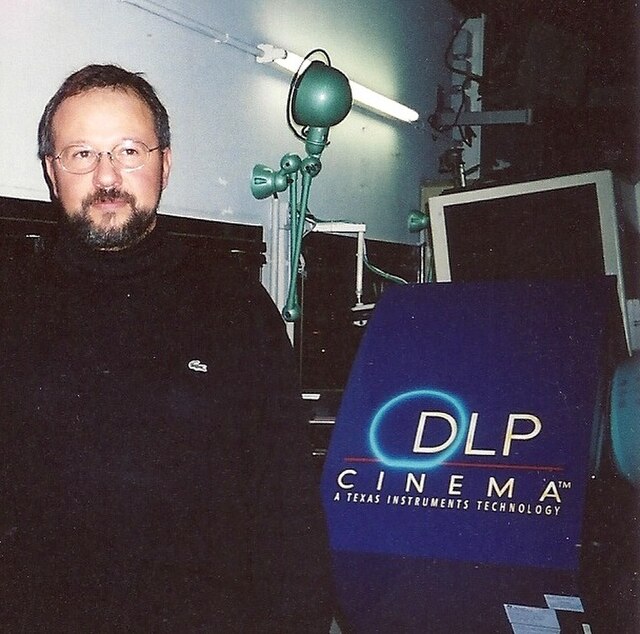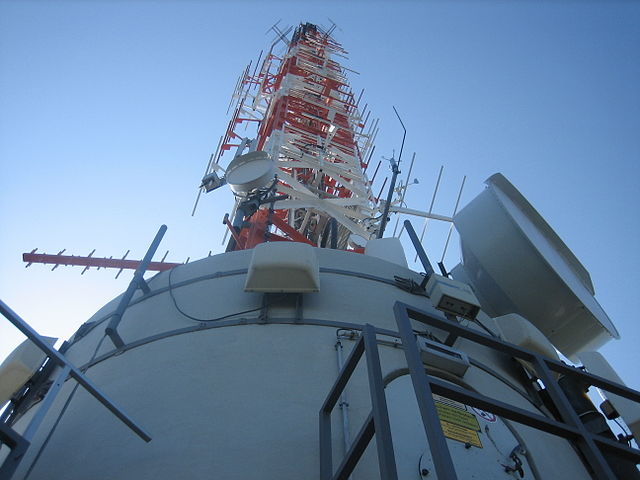Digital cinema refers to the adoption of digital technology within the film industry to distribute or project motion pictures as opposed to the historical use of reels of motion picture film, such as 35 mm film. Whereas film reels have to be shipped to movie theaters, a digital movie can be distributed to cinemas in a number of ways: over the Internet or dedicated satellite links, or by sending hard drives or optical discs such as Blu-ray discs.
Stadium seating rows closer to digital cinema screens offer significantly more immersive experiences.
Texas Instruments, DLP Cinema Prototype Projector, Mark V, 2000
AMC Theatres former corporate headquarters in Kansas City, prior to their 2013 move to Leawood, Kansas
Broadcasting antenna in Stuttgart
The film industry or motion picture industry comprises the technological and commercial institutions of filmmaking, i.e., film production companies, film studios, cinematography, animation, film production, screenwriting, pre-production, post-production, film festivals, distribution, and actors. Though the expense involved in making films almost immediately led film production to concentrate under the auspices of standing production companies, advances in affordable filmmaking equipment, as well as an expansion of opportunities to acquire investment capital from outside the film industry itself, have allowed independent film production to evolve.
The Hollywood Sign
Nestor studio, 1911
Old Chinese Cinema in Qufu, Shandong
A scene from Raja Harishchandra (1913) – credited as the first full-length Indian motion picture.








